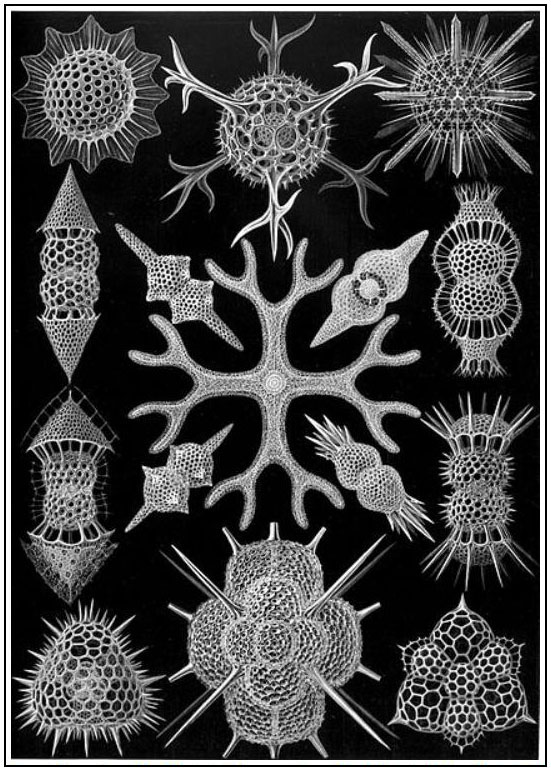Radiolaria The radiolarian are over 500M years old, among the earliest skeletonized life forms. With diameters between 0.1 to 0.2mm the Radiolaria are protozoa that produce intricate mineral skeletons, typically with a central capsule dividing the cell into the inner and outer portions of endoplasm and ectoplasm. They are found as zooplankton throughout the ocean, and their skeletal remains make up a large part of the cover of the ocean floor as siliceous ooze. Due to their rapid turn-over of species, they represent an important diagnostic fossil found from the Cambrian onwards. Some common radiolarian fossils include Actinomma, Heliosphaera and Hexadoridium. The illustrations below were created by Dr. Haeckel during his research at Messina, Sicily. It was very painstaking work. Haeckel had to work fast to draw the living creature – the radiolarian could only be kept alive a very brief time. And the complex structures of the radiolarian could only be made clear with the strongest magnification and the precise angling of light.
z
|

